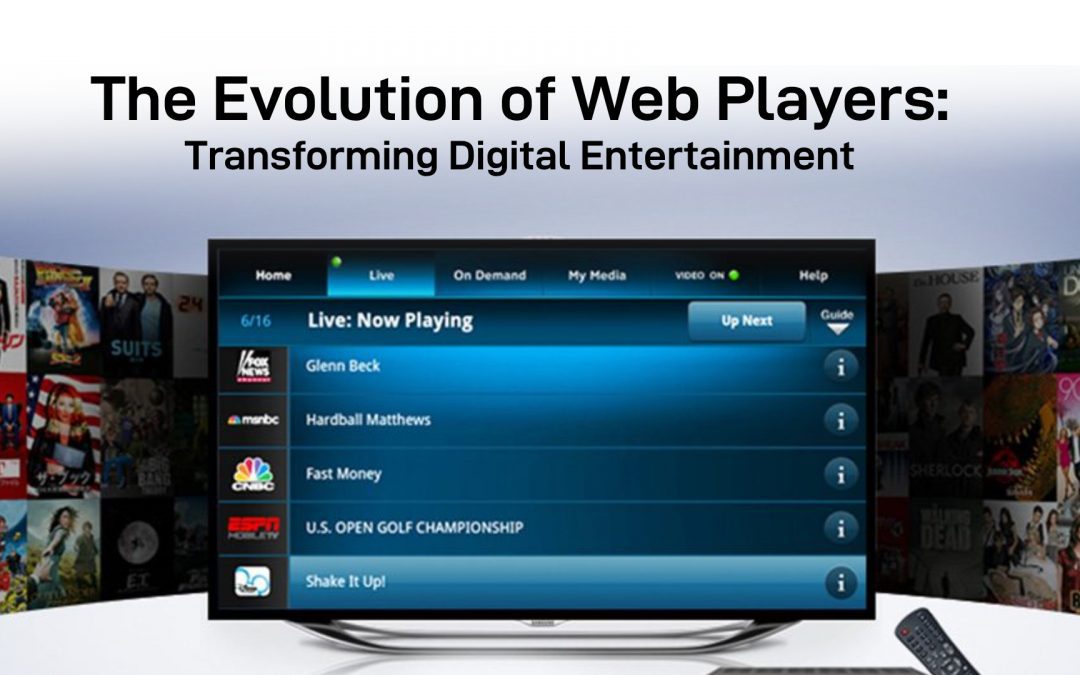WebPlayer: In digital entertainment’s dynamic landscape, web players have emerged as essential elements, transforming the way we consume content online. Users can now easily access a plethora of multimedia content thanks to the significant evolution of these versatile platforms over the years. Webplayer, which seamlessly combine technology and entertainment, have become an integral part of our online experience, from music streaming to video playback.
Rise of Webplayer:
The origin of webplayer can be traced back to the early days of the internet when streaming technology began to gain traction. RealPlayer, a pioneer, set the stage for the digital revolution by enabling users to stream audio and video content directly from the web. The ability of these web players improved as internet speeds increased, paving the way for a new era of online entertainment.
Streaming Music: A Harmonious Revolution
Music has been a major area of change brought about by web players. The days of physical CDs and downloads are gone; today, music fans can have immediate access to an extensive library of songs. The way we discover, share, and enjoy music has become synonymous with platforms like Spotify, Apple Music, and YouTube Music.
Advanced algorithms are used by these web players to create personalized playlists, taking into account user preferences and behaviors. The convenience of streaming music online has not only revolutionized the music industry but has also provided artists with new avenues to showcase their work, fostering a more interconnected global music community.
Also Read: 7 Best UK IPTV Providers [2023 Recommendations]
Video Streaming: The Netflix Effect
Webplayer have also reshaped the way we watch movies and TV shows. The entertainment industry has been transformed by platforms such as Netflix, Hulu, and Amazon Prime Video, allowing users to watch their favorite content without the limitations of traditional cable TV. Web players not only have democratized access to high-quality content but have also given rise to the era of original productions, captivating audiences worldwide.
The evolution of video streaming has been greatly influenced by the user experience. Video quality is adjusted by adaptive streaming technologies based on the user’s internet connection, ensuring a seamless viewing experience. Furthermore, the inclusion of elements such as offline downloads and multiple user profiles has enhanced the personalized stream experience, catering to the diverse preferences of a worldwide audience.
Gaming in the Browser: A Playful Revolution
Web players have extended their reach into the realm of gaming, offering users the ability to play a variety of games directly from their browsers. The emergence of cloud gaming services like Google Stadia and Microsoft xCloud has eliminated the need for high-end gaming consoles or powerful PCs. Gamers can now enjoy graphics-intensive titles with minimal hardware requirements, opening up gaming to a broader audience.
The browser-based gaming experience has also facilitated the growth of casual gaming, with platforms like HTML5 providing a framework for creating engaging games that can be played across various devices. This democratization of gaming has not only broadened the gaming community but has also blurred the lines between traditional and casual gamers.
Challenges and Innovations:
Despite the numerous advantages, webplayer have faced their fair share of challenges. Issues such as copyright concerns, piracy, and data privacy have prompted the industry to continually innovate and adapt. Digital rights management (DRM) technologies have been implemented to protect content creators, and advancements in encryption and secure protocols have enhanced user privacy.
Moreover, the integration of artificial intelligence (AI) has played a pivotal role in refining content recommendations, minimizing playback issues, and enhancing overall user experience. As technology continues to advance, we can expect further innovations in web players, ensuring a safer, more immersive, and personalized digital entertainment landscape.
Also Read:Unlocking the World of Entertainment: Guru IPTV
The Future of Web Players:
The future of webplayer looks promising, with ongoing technologies poised to redefine the digital entertainment experience. The future holds the potential of immersive and personalized experiences with virtual and augmented reality integration, enhanced interactivity, and even more sophisticated AI algorithms.
Web players will likely become more connected to our daily lives, seamlessly integrated into smart homes and IoT devices. The blurring of the boundaries between different media types could create a comprehensive digital experience that meets the changing needs and expectations of users.
Conclusion:
The way we consume and interact with digital content has been revolutionized by web players since their inception. These platforms have become essential for our online journey, from music streaming to video playback and gaming. As we stand on the cusp of a new era in digital entertainment, web players will undoubtedly play a central role in shaping the future of how we experience and engage with multimedia content. Contact us for more information.
Frequently asked questions
Q1: What is a Web Player?
A1: A Web Player is an online application or service that allows users to play multimedia content, such as audio or video, directly through a web browser without the need for downloading or installing additional software.
Q2: How does a Web Player work?
A2: A Web Player typically utilizes web technologies like HTML5, JavaScript, and CSS to stream and display multimedia content. Users can access the player through a web browser, eliminating the need for standalone applications.
Q3: What types of content can be played using a Web Player?
A3: Web Players can handle various types of content, including music, videos, podcasts, and live streams. The supported formats may vary depending on the player and browser compatibility.
Q4: Is there any specific browser requirement for using a Web Player?
A4: Most Web Players are designed to work across popular web browsers like Google Chrome, Mozilla Firefox, Safari, and Microsoft Edge. However, it’s essential to check the player’s specifications for optimal performance.
Q5: Do I need to install any plugins or extensions to use a Web Player?
A5: In general, modern Web Players utilize standard web technologies and do not require additional plugins or extensions. Ensure that your browser is up to date for the best experience.
Q6: Can I use a Web Player on my mobile device?
A6: Yes, many Web Players are mobile-friendly and support responsive design, allowing users to access and enjoy content on smartphones and tablets through their web browsers.
Q7: How do I control playback in a Web Player?
A7: Web Players typically include on-screen controls for play, pause, volume, and sometimes additional features like skip, repeat, and shuffle. Users can interact with these controls using a mouse, touch gestures, or keyboard shortcuts.
Q8: Is it necessary to create an account to use a Web Player?
A8: It depends on the Web Player. Some may require user accounts for personalized features, playlists, or saving preferences, while others allow anonymous usage without the need for an account.
Q9: Can I share content played on a Web Player with others?
A9: Yes, many Web Players provide sharing options. Users can often share specific songs, playlists, or links to the content on social media or via direct links.


